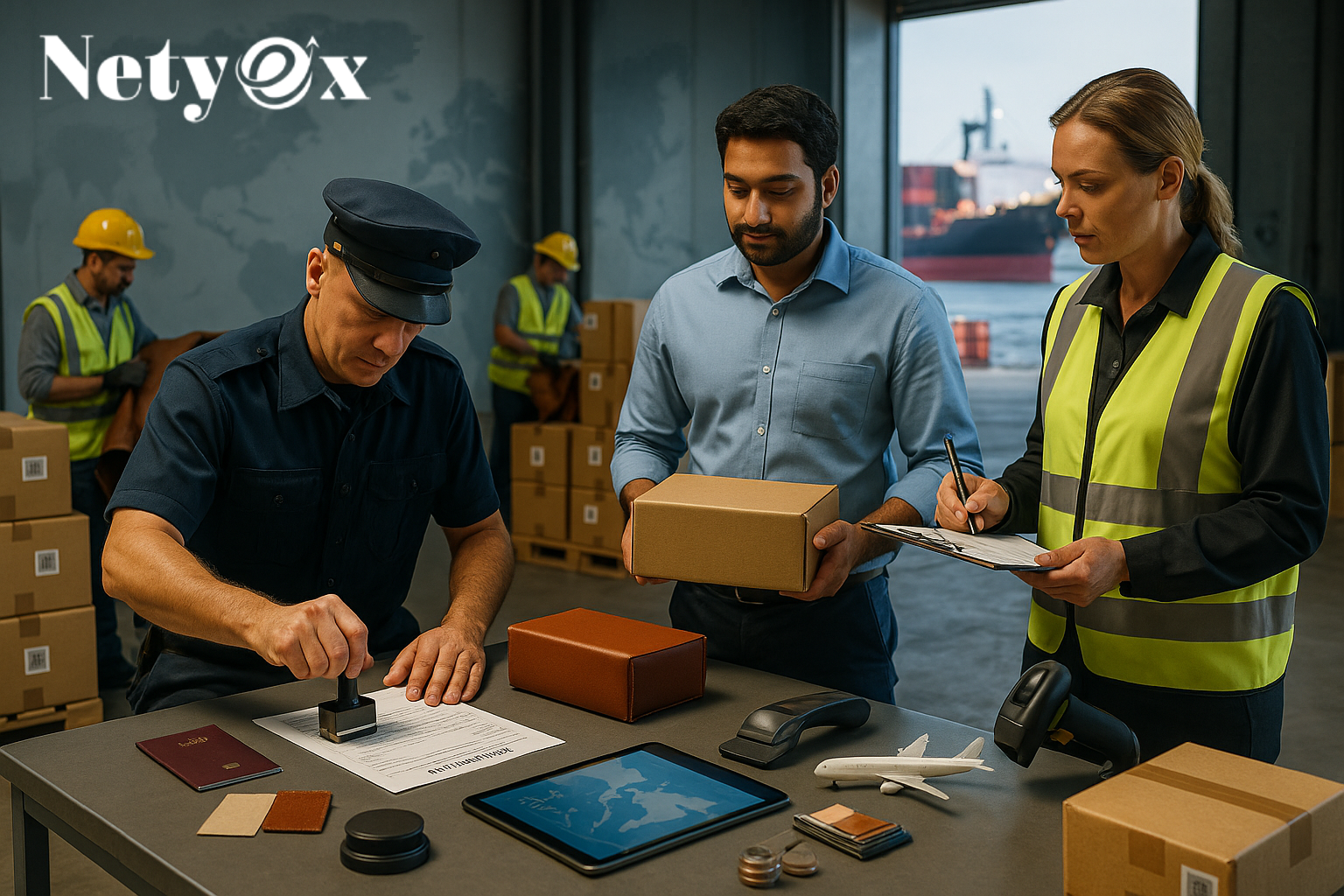Introduction to Customs Clearance
Customs clearance is one of the most crucial steps in the international export process. It involves securing the necessary approvals from government authorities for goods to enter or leave a country legally. For exporters, understanding customs clearance is vital—not just for compliance but also for maintaining smooth, timely, and cost-effective operations.
When a shipment crosses international borders, customs officers review its documentation, assess duties and taxes, and ensure all goods comply with local regulations. The process may sound bureaucratic, but efficient customs management can make or break an exporter’s profitability.
Let’s dive deeper into what every exporter should know to navigate this process effectively.
The Role of Customs Authorities in Global Trade
Customs authorities are responsible for protecting a nation’s economy, collecting revenue, and enforcing trade laws. They ensure that goods moving in and out of the country comply with import/export regulations, safety standards, and trade restrictions.
For exporters, these authorities serve as both regulators and facilitators. While they enforce compliance, they also promote legal trade by offering simplified processes like electronic clearance systems, green channels, and pre-clearance programs for trusted exporters.
Why Customs Clearance Matters for Exporters
Smooth customs clearance isn’t just about compliance—it’s about competitiveness. Exporters who understand and optimize their clearance processes gain a significant edge in global trade.
Avoiding Delays and Penalties
Shipments stuck at customs can result in costly delays, storage fees, and even lost customers. Proper documentation, timely declaration, and understanding local procedures can prevent such setbacks.
Ensuring Legal Compliance
Every country has different trade laws and prohibited items. Failure to comply can lead to fines, blacklisting, or even seizure of goods. Knowledge of export control laws, sanctions, and trade agreements ensures that shipments move smoothly through borders.
Key Documents Required for Customs Clearance
Documentation is the backbone of customs clearance. Each document serves as a piece of evidence verifying the shipment’s legality, origin, and value.
Commercial Invoice
This is the most critical document. It lists the exporter, importer, description of goods, unit value, and total cost. Customs officers use it to verify declared values and calculate duties.
Bill of Lading or Air Waybill
These are transport documents issued by carriers. They serve as proof of shipment and are necessary for both customs and logistics tracking.
Packing List and Certificate of Origin
A packing list specifies the contents and packaging details, while the certificate of origin certifies where goods were manufactured—essential for determining eligibility for tariff exemptions under trade agreements.
Export Licenses and Permits
Certain products—like pharmaceuticals, electronics, or defense materials—require export permits. Failure to obtain them can result in shipment confiscation.
Step-by-Step Customs Clearance Process for Exporters
Step 1: Pre-Export Documentation
Before goods leave the warehouse, exporters must prepare all relevant documents, including invoices, packing lists, and permits.
Step 2: Customs Declaration
The exporter or their customs broker files an export declaration electronically, detailing the type, quantity, and value of goods.
Step 3: Customs Inspection
Authorities may inspect goods to verify accuracy and compliance. Random or risk-based inspections are common.
Step 4: Duty Payment and Release
Once customs duties and taxes are paid, the goods receive clearance for export, allowing them to be shipped to their destination.
Common Challenges in Customs Clearance
Incomplete or Incorrect Documentation
Even minor errors—such as typos or missing signatures—can delay clearance. Exporters should double-check all paperwork.
Misclassification of Goods
Incorrect Harmonized System (HS) codes lead to wrong tariff applications, penalties, or confiscations.
Regulatory Differences Between Countries
Each destination country has its own customs laws. Exporters must adapt to these to avoid non-compliance.
Best Practices for Smooth Customs Clearance
Work with Licensed Customs Brokers
Brokers specialize in handling documentation, filing declarations, and communicating with authorities—saving time and reducing errors.
Use Digital Tools and Automation
Modern platforms like TradeLens, DHL MySupplyChain, and FedEx Trade Manager streamline document submission and real-time tracking.
Stay Updated on Export Regulations
Regulations evolve constantly. Exporters should subscribe to trade authority newsletters or use global trade compliance software.
How Customs Brokers Help Exporters
Customs brokers act as intermediaries between exporters and government authorities. They manage documentation, verify HS codes, and calculate tariffs accurately. By partnering with a licensed broker, exporters can reduce administrative burdens and ensure faster customs clearance.
Customs Duties, Tariffs, and Taxes Explained
Exporters often misunderstand duties and tariffs. While export duties are less common, some countries impose taxes on certain raw materials or strategic goods. Understanding these charges helps exporters price products competitively and plan budgets accurately.
The Role of Technology in Modern Customs Clearance
Digital transformation has revolutionized customs clearance. AI algorithms now assess shipment risks, blockchain ensures transparency, and automated systems reduce processing times. For instance, Singapore’s TradeNet allows near-instant customs approvals, setting a global benchmark.
Case Study: Successful Customs Clearance for a Global Exporter
A European electronics exporter once faced repeated shipment delays to Southeast Asia. By partnering with a customs broker and automating document submission, they cut clearance time from 72 hours to under 12 hours, saving over $50,000 annually in demurrage costs.
FAQs: Customs Clearance for Exporters
1. What is customs clearance in exporting?
It’s the process of getting official permission for goods to leave a country legally.
2. How long does customs clearance take?
It varies by country—typically 24 to 72 hours for compliant shipments.
3. Can exporters handle customs clearance themselves?
Yes, but hiring a customs broker is recommended for accuracy and efficiency.
4. What happens if documents are missing?
Shipments may be delayed, fined, or even returned.
5. How can exporters speed up customs clearance?
Ensure documentation accuracy, pre-declare goods, and use digital customs systems.
6. Are there global standards for customs clearance?
Yes, the World Customs Organization (WCO) sets international guidelines.
Conclusion
For exporters, mastering customs clearance isn’t optional—it’s essential. By understanding documentation, leveraging technology, and partnering with customs professionals, businesses can ensure smoother, faster, and more profitable global trade operations.













